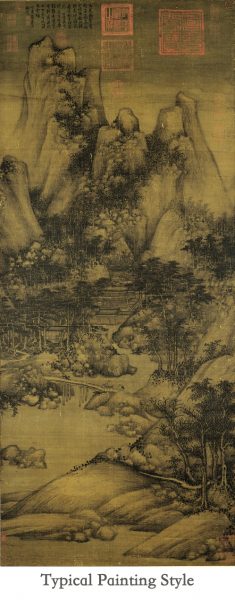(907-960)[1]
As the Tang Dynasty (618-907) began to lose its grip on its political empire, it granted increasing powers to a group of military governors known as jiedushi. These officials governed expansive regions and commanded large armies, making them formidable forces in the Tang government. The Tang Dynasty’s death knell came in the form of a rebellion led by a warlord named Huang Chao, which lasted for ten long years! This rebellion virtually crippled the imperial court and, in the ensuing chaos, the jiedushi took control of their respective regions, effectively gaining complete autonomy from the Tang.
Huang Chao was eventually betrayed by a salt smuggler named Zhu Wen, who was granted the title of jiedushi by the Tang Dynasty for his help. Like a true snake in the grass, Zhu Wen deposed the reigning Emperor Ai in 907 and took the throne for himself, establishing the Later Liang Dynasty (907–923) and officially putting an end to the Tang Dynasty. However, Zhu only controlled a small portion of China’s territory at the time. The other jiedushi, seizing the opportunity, declared their independence and ushered in an era of instability known as the Five Dynasties and Ten Kingdoms Period.
From then on, five short-lived dynasties would successively take control of northern China, while the south and the west were under the sway of ten separate kingdoms that, in many instances, ran concurrently. This period of political disunity was markedly brief, lasting only 53 years before the Song Dynasty (960-1279) was founded in 960. However, many of the regimes that took control during this time would have a profound impact on the cultures of the regions they commanded. In particular, the Kingdom of Wuyue (907-978), which ruled over present-day Zhejiang province, Shanghai, and large parts of Jiangsu province, would have a lasting effect on the culture of this coastal region.
 The major political developments that took place during this period had largely started during the Tang Dynasty and would not come to fruition until the Song Dynasty. In short, the Five Dynasties and Ten Kingdoms Period was more of a transitory era than anything else. It represented the disintegration of the traditional governmental structure and the decline of the aristocratic clans. Although this period was plagued by warfare and disruption, it propelled the underlying changes that were transforming China into a new political entity.
The major political developments that took place during this period had largely started during the Tang Dynasty and would not come to fruition until the Song Dynasty. In short, the Five Dynasties and Ten Kingdoms Period was more of a transitory era than anything else. It represented the disintegration of the traditional governmental structure and the decline of the aristocratic clans. Although this period was plagued by warfare and disruption, it propelled the underlying changes that were transforming China into a new political entity.
The last of the Five Dynasties, known as the Later Zhou (951–960), enjoyed reasonable success until the sudden death of Emperor Shizong led to a seven-year-old boy taking the throne. At that age, he was barely ready to ride a bicycle, let alone rule an entire kingdom! In short, the atmosphere was ripe for usurpation. In 960, a militarist named Zhao Kuangyin seized the throne and established himself as Emperor Taizu of the Song Dynasty. However, rather than employing militarism, Taizu was a master of political manoeuvring.
Instead of destroying powerful generals in battle, he persuaded them to give up their territories in exchange for honorary titles, cushy government jobs, and generous pensions. Alliances were further strengthened by marrying members of the royal family to members of leading military families. This was an un-heard of political strategy in Chinese history, yet it worked to great effect. It seems that, in this case, the carrot firmly won over the stick! However, it wasn’t until 979 that the Song was finally able to annex the last of the ten kingdoms, known as the Northern Han (951–979). The country was thus reunited, but a constant threat loomed large on China’s northern frontiers. The powerful Liao Dynasty (907–1125), led by a nomadic group known as the Khitans, represented a significant threat. Peace may have been restored and the empire may have been reunified, but war was still on the horizon.
[1] Please note that some historians argue the real endpoint of this period to be 979, as this was the year when the Song Dynasty finally conquered the last of the Ten Kingdoms.